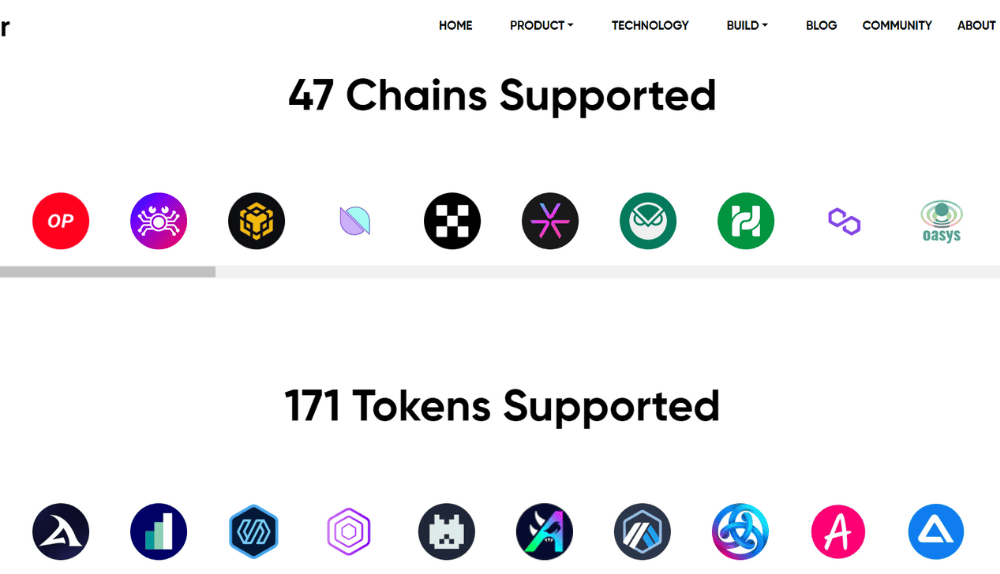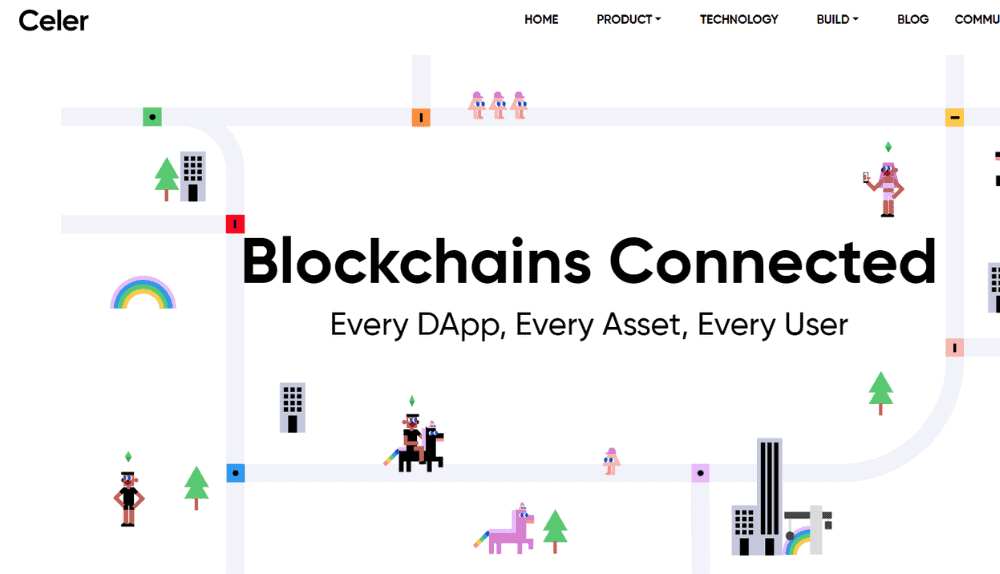Everything You Need to Know About Celer Network (CELR)
There are now some blockchain networks that support cross-chain communication. Celer network is one such network designed to provide multi-chain support for top blockchain networks including Ethereum and Polkadot.
The blockchain industry is swiftly affecting every small and major industry. It enables developers to launch a wide range of decentralized applications that can automatically perform multiple interactions without any human involvement.
However, the decentralized applications that are built on different blockchain networks cannot interact with each other due to security issues. So, the developers need to build a separate version of their applications that can meet the needs of different blockchains. They also need to use third-party services to connect these versions to each other.
Similarly, the developers need to use external services if they want to fetch data from the web2.0 platform. Celer network solves this problem.
What is Celer Network?

Celer is a layer-2 blockchain solution that supports the deployment of decentralized applications across several blockchains. The platform is primarily focused on providing fast off-chain transactions and simplifying operations for smart contracts. The platform is dedicated to fixing some of the biggest problems that developers experience with smart contracts.
It offers a set of tools that may be required to improve the performance of decentralized applications. Thus, it can provide a scalable and secure environment for some of the biggest smart contract platforms including Ethereum. The unique thing about the Celer network is that it offers a mobile application with a software development kit that may be used for layer-2 scaling.
Unlike other state-of-the-art solutions, the Celer network provides 15 times higher throughput with its optimal state algorithm for routing. It’s the first-ever blockchain network that enables state availability, dispute resolution, connectivity, and additional liquidity for off-chain operations.
Celer Network Brief History
Celer Network was introduced by Xiaozhou Li, Mo Dong, Qingkai Liang, and Junda Liu in 2018. The founders have PhDs from leading institutes such as UC Berkeley, Princeton, UIUC, and MIT. They also contributed to building enterprise software like VeriFlow, B4, Google Fi, and Intel DPDK.
The team carried out a Seed sale in April 2018 and raised around $7,475,000 by selling 11.5% of the total supply. Later on, a private sale was conducted in August 2018 when the team raised around $23,250,000 by selling 15.5% of the total supply. The team raised another $4,000,000 funding through a Launchpad sale in March 2019 when 6% of the total supply was released.
The alpha mainnet of the Celer network went live in July 2021 and was marketed as Cygnus. It was introduced as a Generalized State Channel Network. And the team later expanded its operations to support cross-chain communication.
Important Features of Celer
Celer State Guard Network
Celer State Guard Network plays the role of a message router between different blockchain networks. It uses the proof-of-stake consensus mechanism to process transactions. The node operators need to stake their CELR tokens to participate in the process.
SGN charges a small amount of fee when a user accesses the message routing services. Similarly, the users need to pay CELR tokens while storing the multi-signature attestation. The fee is transferred to the node operators along with the staking rewards.
cBridge
cBridge provides a fast, secure, and low-cost solution for transferring a wide range of tokens across different blockchain networks. cBridge currently supports 30+ blockchain networks allowing users to transfer 130+ tokens. cBridge is quickly growing and expanding its operations across different blockchain networks.
The team introduced the cBridge v1.0 in July 2021 allowing users to transfer tokens between leading blockchain networks including, Ethereum, Polygon, Arbitrum, and BNB Chain. The cBrdige v2.0 was introduced in November 2021 that was capable of supporting token transfers across 20+ blockchain networks.
cBridge v2.0 offered higher efficiency, deeper liquidity, better ease of use, and other benefits for different participants including node operators, liquidity providers, developers, and users.
According to a recent report, the Celer network has served more than 199k unique addresses so far. The platform achieved a milestone of $10 billion in transaction volume in August 2022.
Inter-chain Message Framework
Inter-chain Message Framework enables developers to build inter-chain-native decentralized applications with coherent application logics, efficient liquidity utilization, and shared states. It provides a single-transaction UX while allowing users to enjoy the benefits of a diverse multi-blockchain ecosystem.
The best thing about this framework is that it introduces a myriad of opportunities for inter-chain-native applications such as NFT marketplaces, yield aggregators, metaverse games, cross-chain DEXes, NFT bridges, etc.
Layer2.finance
Difficult navigation and the extraordinary high fees are the two major problems why DeFi platforms are struggling to achieve their true potential. Celer Network introduced the Layer2.finance in April 2021 to fix these problems. It plays the role of a DeFi Public Transporation system allowing users to access all the existing DeFi protocols at a reasonable price.
How Does Celer Network Work?
The Celer network is a layer-2 blockchain network designed to provide secure and scalable solutions for decentralized transactions. It uses side chains to verify multiple transactions in parallel. Furthermore, it incorporates the Generalized State Channel Network to provide a fast and cost-effective environment to the users.
GSCN provides excellent scaling solutions for decentralized applications by supporting fast off-chain transactions. The platform uses a Proof-of-Stake consensus mechanism for verifying transactions. The node operators need to stake their CELR tokens to participate in the process.
Celer Network Tokenomics
CELR is the native token of the Celer network that is used to pay transaction fees. With a circulating supply of 7.6 billion tokens, CELR has a market cap of $159 million. It ranks among the 200 best cryptocurrencies in terms of market cap. It has a total supply of 10 billion tokens that will be released over the years.
Conclusion
Celer Network (CELR) has emerged as a promising layer-2 blockchain solution that addresses the scalability and efficiency challenges faced by decentralized applications. By providing fast off-chain transactions, multi-chain support, and inter-chain communication, Celer Network offers developers the tools they need to improve the performance of their applications.
With its state-of-the-art features like the Celer State Guard Network, cBridge, Inter-chain Message Framework, and Layer2.finance, Celer Network aims to create a scalable, secure, and user-friendly environment for the blockchain ecosystem. Feel free to get in touch if you need more information about how the Celer network works.
We also invite you to subscribe to our weekly newsletter if you need regular updates about Bitcoin and the crypto market.




